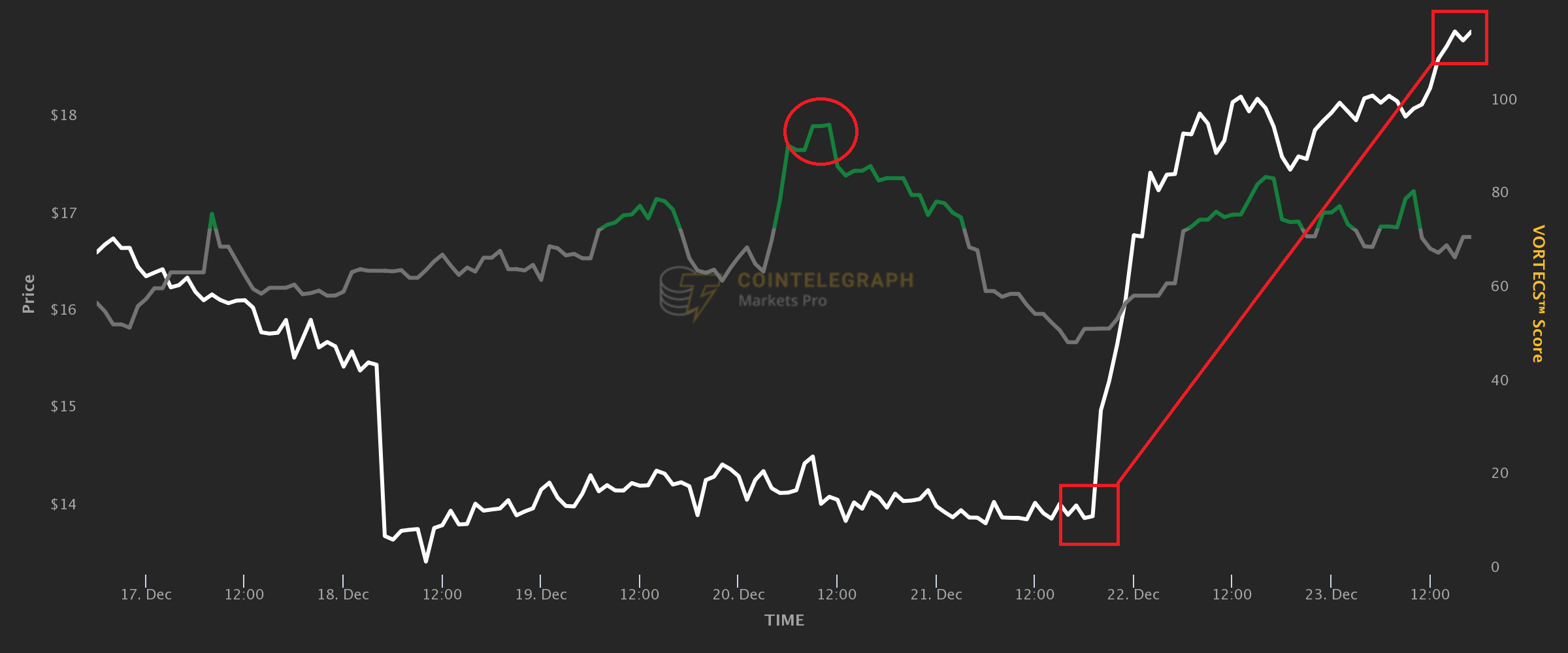Frax Share (FXS) has been one of the few altcoins to pull off a dominant price performance amid the down market of late 2021 to early 2022. In the month between Dec. 14 and Jan. 14, FXS was up 128% against the U.S. dollar and 159% against Bitcoin (BTC). In addition to this impressive feat, FXS topped the charts of historically bullish trading conditions on multiple occasions throughout this period. What is behind the token’s recurring strong trading outlook?
Governing a stablecoin ecosystem
FXS is the utility token underpinning the Frax ecosystem — a stablecoin protocol that seeks to occupy a middle ground between entirely collateralized and entirely algorithmic stablecoins, thus harnessing the advantages of both designs.
In accordance with the protocol’s highly “governance-minimized” approach to its architecture, there is a limited set of parameters that the community gets to adjust using the token. These include refreshing the rate-of-collateral ratio — i.e., the share of the protocol’s FRAX stablecoin that is stabilized either algorithmically or through collateralization — in addition to adding collateral pools and adjusting various fees.
FXS’ supply is initially capped at 100 million tokens, and the protocol is designed for the token supply to be deflationary as the demand for the FRAX stablecoin rises. This mechanism could be responsible for at least some portion of FXS’ momentum in recent weeks. As Cointelegraph previously reported, FRAX added 300% to its circulating supply between late October and late December.
Curve Wars winner
Because of this link between the demand for FRAX and the corresponding shrinkage in the supply of FXS, rounds of FRAX adoption can theoretically result in waves of FXS appreciation. Evidence supporting this hypothesis can be found in several recent instances of the decentralized finance (DeFi) community adopting the stablecoin.
For one, FRAX’s addition to the Convex Finance platform, where several major DeFi protocols compete for voting rights that can be leveraged to increase their respective stablecoins’ yield, preceded a major spike in the FXS token’s price.
Interestingly, many of such FXS rallies, apparently inspired by major FRAX adoption events, produce recurring patterns of trading and social activity that get detected by Cointelegraph Markets Pro’s algorithmic indicator, the VORTECS™ Score. This AI-driven tool is trained to sift through tokens’ historical performance data, looking for familiar combinations of variables such as price movement, trading volume and Twitter sentiment that have systematically preceded dramatic price movements.
Green means go
Here, for example, is the chart of FXS’ VORTECS™ Score vs. price from the week that FRAX was added to Convex Finance. The indicator flashed an ultra-high Score more than one full day ahead of the token’s powerful price spike.

In the weeks that followed, FXS’ VORTECS™ Score peaks kept coming ahead of price spikes. Earlier this week, two streaks of Scores above 80 foreshadowed two phases of explosive price action, including the one that saw the asset hit a weekly high of $41.72.

Of course, the relationship between historical precedent and subsequent price action is not always this smooth. Yet, in many cases, this tool — capable of parsing years’ worth of assets’ performance data — can be massively useful for crypto traders.
Cointelegraph is a publisher of financial information, not an investment adviser. We do not provide personalized or individualized investment advice. Cryptocurrencies are volatile investments and carry significant risk, including the risk of permanent and total loss. Past performance is not indicative of future results. Figures and charts are correct at the time of writing or as otherwise specified. Live-tested strategies are not recommendations. Consult your financial adviser before making financial decisions.









Leave A Comment